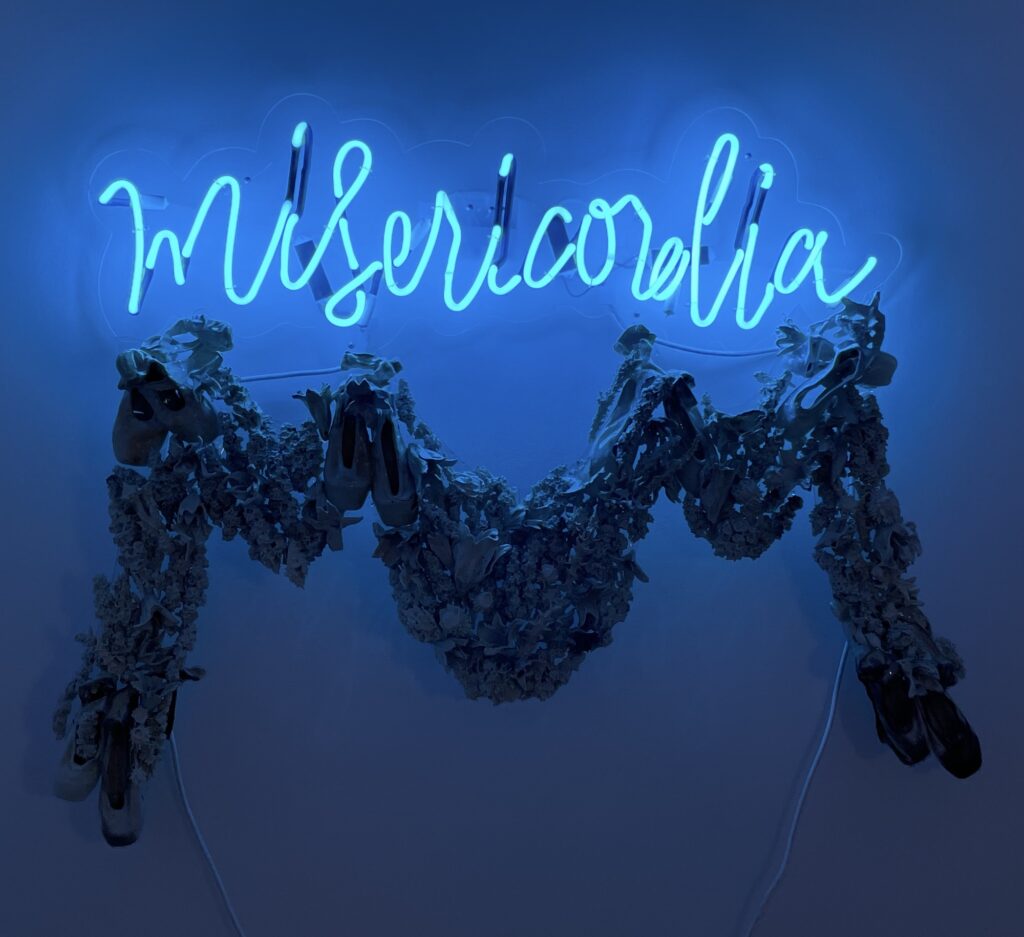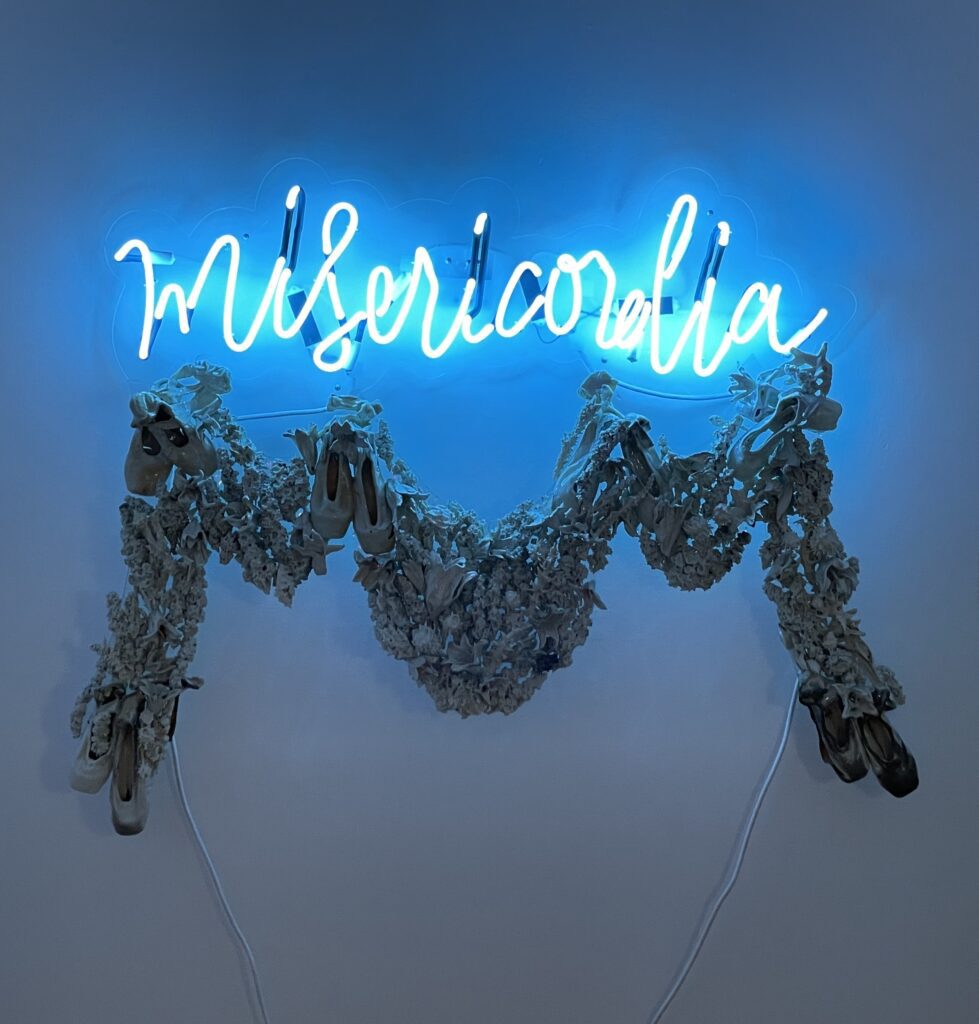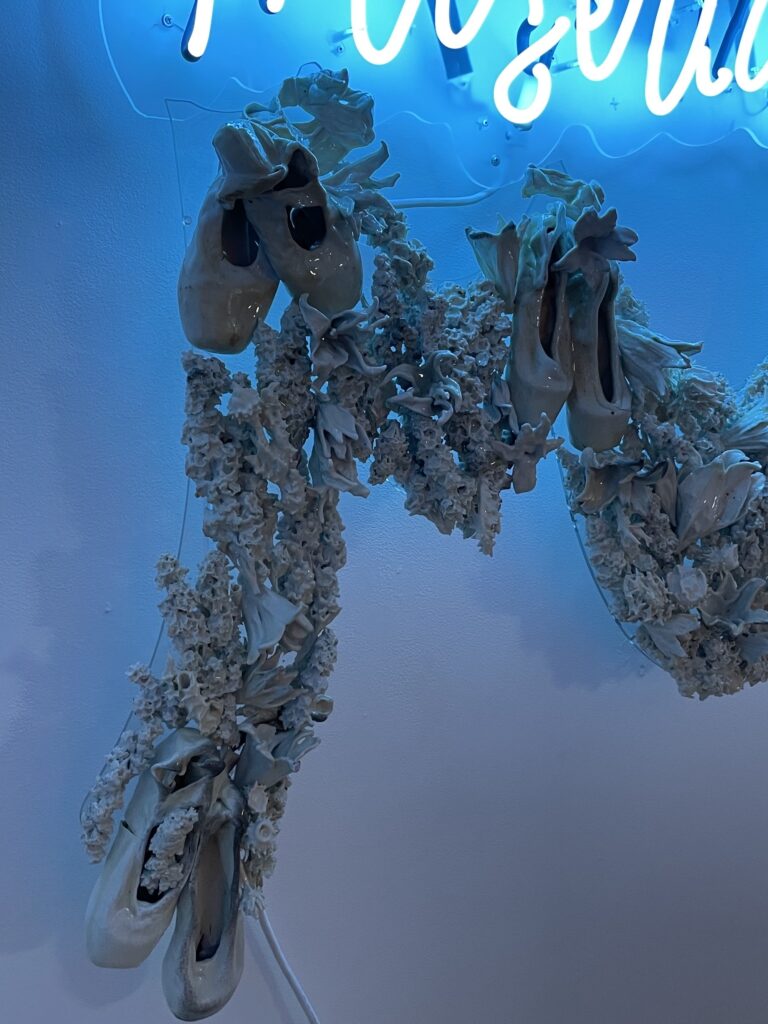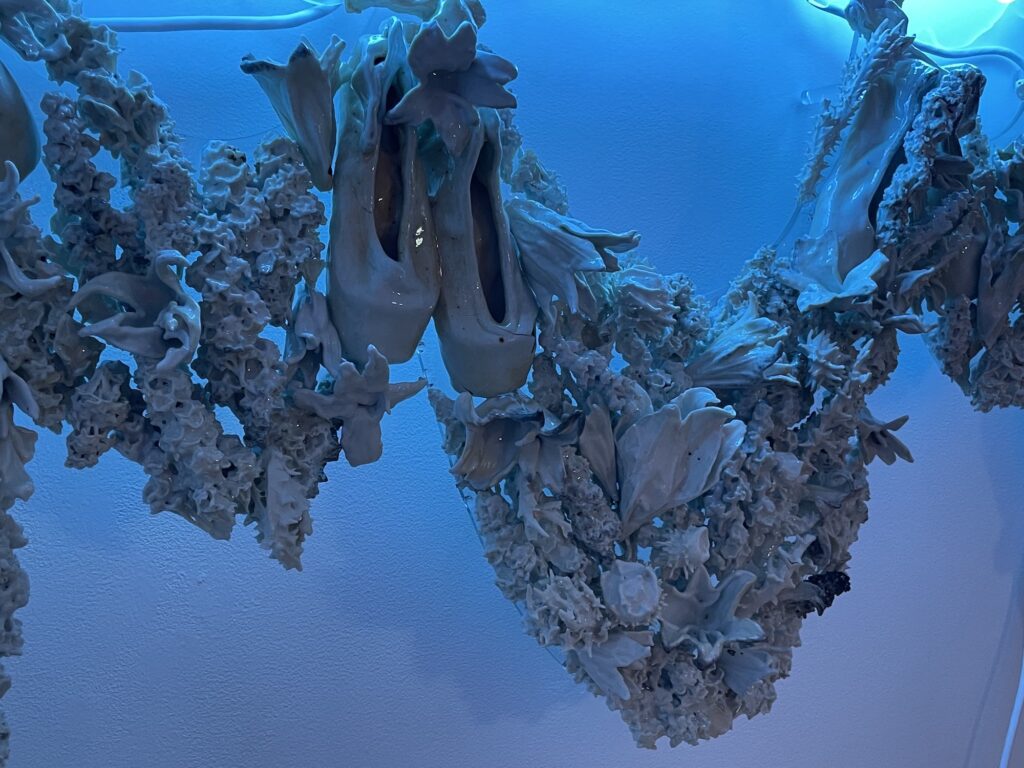Amanda Barr
“The two of them alone remained: mercy with misery.” -St. Augustine, Misericordia et Misera
*Note: when speaking about “women” in this piece, I am using the language of the Church; in reality “women” here includes cis women as well as those who are trans women, non-binary, and AFAB persons.*
Misericordia (mercy) is a piece about the church, femininity, and pain. “Misericordia” is a word that has always fascinated me. Many students mistake it for “misery,” though it translates to “mercy.” In many ways, I love this kind of false cognate as a sort of linguistic puzzle. Etymologically, both words share the same Latin root, maereō, and Ancient Greek before that, μῖσος. Misery and mercy, wretched and compassionate, originating from the same source is poetic.”
“Saint Augustine commented more than once on the story from the Gospel of John of a woman caught in adultery, whose stoning was halted by Jesus. His phrase, misera et misericordia, used to describe when only the woman and Jesus remained alone, a word-play on “the pitiful and Pity itself.” In 2016, Pope Francis chose to revive this phrase in an Apostolic Letter giving priests the ability to grant forgiveness for abortion, while maintaining that abortion remains a grave sin. The location of the Holy See in Vatican City led me to create this piece in Italian (though the word is the same in Latin and Spanish).”
“I have such complex feelings on the Church, men’s decisions about women’s bodies, what is forgivable, doctrines and the impact of the Church on women, much less marginalized populations, over the centuries. The garland shape references all the pomp and circumstance I grew up loving about church, Baroque flourishes and bountiful decorations. The everpresent lilies in spring, “He is Risen,” an overpowering floral scent as you gazed upon the altar. Pointe shoes, once worn down to where they no longer support a dancer, become “dead.” These shoes have been resurrected into a grotesque second life, as eerily beautiful in their ceramic tombs as they once were lifting their wearer into arabesques and pas de Bourrées. Underneath a dancers’ shoes, though, are often mangled toes and painful feet. The messaging of the church to young women about their bodies, the spaces they’re allowed to occupy, and their worth, is similarly damaging. This damage often, as with my mother, gets adapted, reworded, and transliterated down to the next generation. Misericordia becomes misera, misery mistaken for mercy, onward and onward. The original message has been lost in the interpretations. The result may appear pure and beautiful, pomp and circumstance but in truth it is agony, as with the dancer’s feet.”
“This piece has additionally been soda fired, giving the porcelain a blue-gray cast that tips off into deep charcoal where the soda and flame have hit hardest. It gives the ceramic portion a further dimension, proof of the fires, of the process. It certainly adds an extra layer of contrast in the material, and communicates another echo of pain into the composition. It perhaps only needs to be said for posterity, but the amount of miscommunication and misinterpretation that surrounds us in the world due to religious extremism – right wing terrorism, Q-cult, anti-vaxxing – is immense, and incredibly unfortunate.”

Amanda Barr (she/her) most recently finished her MFA in Studio Arts and MA in Art History at the University of Montana. She currently has a studio practice in Missoula as well as freelancing as a writer and designer, and is the Director of the University Center Gallery at the University of Montana.
Website: https://www.amandabarr.com
Instagram: https://www.instagram.com/amandambarr
To purchase this work, contact the artist.




